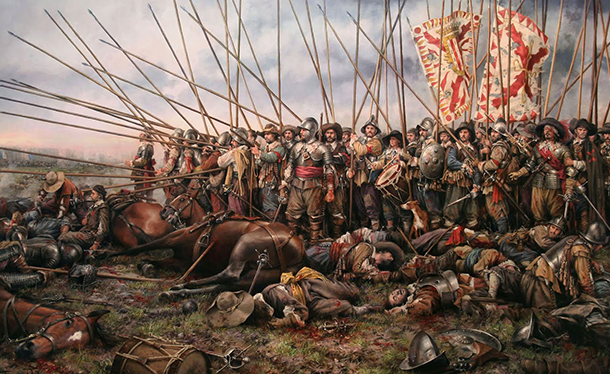
THE 30 YEARS WAR: A Recipe for Disaster!
July 26, 2012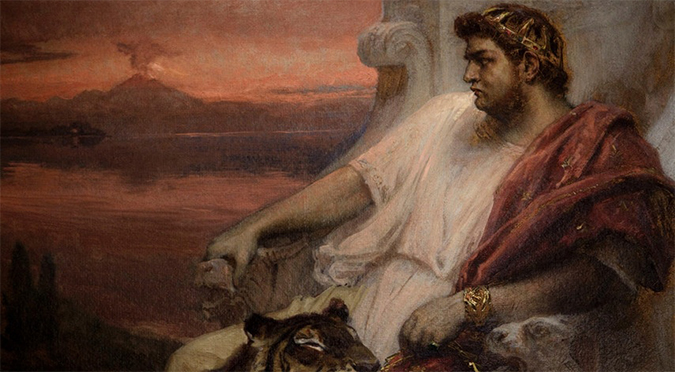
EMPEROR NERO: Worst-Approval-Ratings-Ever!
August 7, 2012I’m going to start off with a disclaimer here and establish that I am an American, and am in no way accusing America of being an Epic Fail. That’s not to say that there haven’t been some mistakes the size of the Grand Canyon along the way, after all we’re only human. I’m also Not saying the War of 1812 was a mistake, but it wasn’t exactly our proudest moment…. and yet in many ways it was one of our defining moments, because in our darkest hour we proved our worth, we didn’t go silently in the night, we kicked @$$!
For those of you who failed Elementary level U.S. history, America won its independence from Great Britain during ‘The American Revolution’, from 1775–83, (“You’re Welcome,” says France), but many Americans overlook the thrilling ‘sequel’ that followed a few decades later…
Yes, that’s right, I’m talking about: ‘America’s SECOND War for Independence.’
Now some of you may be scratching your brains, and saying, “But my Kindergarten teacher told me that George Washington beat those British Red Coats (and their taxes!), after chopping down that Cherry tree, and before posing for the One Dollar Bill!”
Well, public schools do tend to skip that particular chapter of American History 101, because it wasn’t as, shall we say, black and white, clear-cut, ‘Good versus Evil’ this time around. In fact, ask any college-level history professor, and they’ll tell you most of their students never even heard of it prior to their class. I tend to think it’s because we had our butts handed to us by Canada, but more on that later…
Previously in US History Class…
First off a quick summary of the events that led to the star-spangled holiday on the Fourth of July in which we Americans (drunkenly) celebrate our Independence from Great Britain – with explosives…
 During the Age of Exploration, the British Empire established Thirteen Colonies in the ‘New’ World, after a couple mishaps like the Lost Colony of Roanoke (that one colony that just up and vanished under mysterious horror movie esque circumstances), half a millennium after Viking Explorer, Leif Erikson stumbled onto the shores of Canada, a few hundred years after Columbus discovered the Bahamas, and hundred years after the Spanish explorer
During the Age of Exploration, the British Empire established Thirteen Colonies in the ‘New’ World, after a couple mishaps like the Lost Colony of Roanoke (that one colony that just up and vanished under mysterious horror movie esque circumstances), half a millennium after Viking Explorer, Leif Erikson stumbled onto the shores of Canada, a few hundred years after Columbus discovered the Bahamas, and hundred years after the Spanish explorer  Ponce De Leon landed in Saint Augustine, Florida and discovered the Fountain of Youth… right before dying from a poison-tipped arrow courtesy of angry natives.
Ponce De Leon landed in Saint Augustine, Florida and discovered the Fountain of Youth… right before dying from a poison-tipped arrow courtesy of angry natives.
The first successful permanent English colony was Jamestown, Virginia (named by Sir Walter Raleigh after Queen Elizabeth… the um ‘Virgin’ Queen of England), in 1607, where the story of Pocahontas and John Smith played out quite differently from the Disney film. Pocahontas never had an affair with John Smith (seeing as she was 10 at the time of his arrival), Smith, whom history remembers as a gigantic jerk, was allegedly captured by the native Powhatan Indians, but was saved by the Chief’s daughter, Pocahontas. This legendary girl did go on to marry John Rolfe, had a couple of kids and traveled with him to England where she became a diplomat. Unfortunately Pocahontas died on her journey back home at 21.
After some crazy shenanigans like the First Thanksgiving of the Mayflower pilgrims, the Salem Witch ‘Trials’, and the French-Indian-War, King George the Third of Great Britain came into power (1760-1820)…

King George III
The first of many failings King George III undertook was appointing a cabinet of completely incompetent ministers. Under his rule, the American colonies gradually got fed up with all the bull that kept coming their way from this aloof monarch between the Stamp Act, and the Townshend Acts which unfairly screwed over the working man. The American colonists were starting to get tired of being treated like second rate peasants. Then in 1770, Boston, a rather unfortunate incident occurred (The Boston Massacre) where a couple of British soldiers were attacked by angry American colonists who were sick of taxes, tyranny and stuff. The soldiers ended up firing into the angry mob, and killed five citizens which only made matters worse, for the British.
 In response to ridiculous tax hikes on tea, most level-headed Americans opted for coffee instead. However, a few angry individuals decided they were gonna #&$% some $%@# up and blame it on the Indians.
In response to ridiculous tax hikes on tea, most level-headed Americans opted for coffee instead. However, a few angry individuals decided they were gonna #&$% some $%@# up and blame it on the Indians.
The “Boston Tea Party” (1773) was a political statement / frat-like-prank / illegal wanton destruction of property and goods by a handful of Patriots, dressed like Native Americans, that resulted in 342 crates of ruined tea totaling 45 tons and a whopping $1 million dollars in damages (adjusted for inflation). Approximately 24,000,000 cups of tea! (you’re welcome fish?)
After this series of terrible PR debacles in Boston, the diplomatic King George decided the best course of action to alleviate tensions with their countrymen across the sea was to raise taxes, again… The Coercive and Intolerable Acts were the last handful of straws. The Colonial militias began to fight back, when the British laid siege to Boston, and shit hit the fan real quick.
The militia’s arsenal was seized, the Continental soldiers were obliterated by cannon fire, and the King declared them rebels against the crown. Boston remained under imperial occupation for the remainder of the conflict. It was beginning to look like an arm-less David squaring off against a Goliath on steroids.
Following the Siege of Boston (1775), members of a secret society known as the Freemasons: a group of super cool intellectuals and wealthy socialites, gathered together at their top-secret headquarters to decide the fate of the new world order.
This shady cabal of forward thinkers included famed inventor, Benjamin Franklin, historical badass George Washington, future president, Thomas Jefferson, and Thomas Paine, author of ‘Common Sense’, as well as other “Founding Fathers” like Samuel Adams, John Adams, and of course the hilariously named John Hancock. Many of those present may or may not have been involved in the scandalous events involving the theft and subsequent destruction of 92,000 pounds of tea bags.
These rich white dudes were sick of being oppressed (lol), so met up at a kegger to sign over support to Thomas Jefferson’s newly drafted F-You letter to King George: THE DECLARATION OF INDEPENDENCE, on July 4th, 1776 in Philly.

“We hold these [FAILS] to be self evident… [Stop being a d-bag, you’re not my real dad, I’m an adult, you can’t tell me what to do.]” – a brief summary of the Declaration (of Independence).
The awesome thing about Washington is once he was elected as the President he didn’t go power crazy like Caesar or Napoleon and seize ultimate power. Washington broke the cycle and set the standard for the future of diplomacy.
This Revolutionary War culminated at the Battle of Yorktown, where the French came to our rescue at sea and helped us capture the British army in 1781. A Peace Treaty was signed two year later, the Constitution was written in 1788, and the rest is history.
But that’s not all folks: King George didn’t exactly accept defeat lightly, rather he laughed maniacally in his castle muttering to himself, “Till next time Washington, till next time!” George was a bit of a sore loser. Cliff hanger, roll credits…
The Second War for Independence?
The easiest way to sum up this conflict is that Britain wanted a rematch, and… well, we gave it to them; defending our champion title with honor (and some dirty fighting), but it’s a little more complex than that.
For starters, America had grown a bit since their last duel. The U.S. had gone from 13 measly little colonies to 18 battle-hardened, independent, states with a huge chunk of territory to the west due to the Louisiana Purchase from Napoleon-controlled France in 1803. (We’re talking 828,000 square-miles! That’s 15 future States! That’s like quadrupling the size of the country overnight!)
Now I’m not saying Americans are greedy, but well, these early Americans had very big ambitions. There was this concept called ‘Manifest Destiny’ which often means the ends always justify the means, right? Many Americans of the time felt they needed to expand their rule to the four corners of the continent and beyond. The main problem with that a good chunk of that land was not exactly for sale.
Meanwhile, England kept waiting for America to fall apart, in fact they expected us to come crawling back at any moment. Sure those Brits were sore losers and never really respected the newfound freedom of their former colonies, but they weren’t exactly looking to start a war, especially since England kind of had their hands full squaring off against a would-be-supervillain-bent-on-world-domination, by the name of Napoleon (perhaps you’ve heard of him?)

Bonaparte (not Dynamite)
Not to mention they’d been fighting wars nonstop since like the 1300’s: Wars for Empire, The War of the Roses, King George’s War, King William’s War, Queen Anne’s War, War for the Spanish Succession, the War for the Austrian Succession, the French/Indian War, the Seven Years War, the Nine Years War, the Thirty Years War, the 80 Years War, The Hundred Years War, and… the War for Jenkins Ear?!
Who Started it?
Tensions between our two nations were already on the rise with reports of British Naval ships stopping American merchant boats and began ‘recruiting’ (kidnapping) their crews into the Royal Navy with the excuse that they were ‘deserters’ (granted there were a lot of deserters during the Napoleonic Wars).
In 1807, there was an American Naval ship called the Chesapeake. The USS ‘Chesapeake’ was stopped by a British ship called ‘the Leopard’, off the coast of Virginia. The guys on the Chesapeake were all like “What’s up? You guys lost?”
The British dudes were all like “Hahah, no.”
The British officers attempted to take the American seamen into custody with the tone of a snooty highway patrol officer, to which the Americans replied with gunfire. Alas they were hopelessly outgunned because they were a mere supply ship. 24 American sailors were shot or captured during the incident.
This whole ‘misunderstanding’ that led to the un-originally titled war (of 1812 that is), was further fueled by an incident involving the ‘Indians’ in Indiana. It all started on the edge of the frontier, where the settlers were having some ‘issues’ moving westward, because you know they were attempting to evict angry indigenous tribes off their own land and all, just because. The Native Americans weren’t exactly thrilled with this prospect, so naturally they put up a fight. This wasn’t really a problem, until the tribes began to unite that is.
In 1811, William Henry Harrison (future Prez) showed off his political skills by trading with the various tribes and when they couldn’t pay off their substantial debts, he told them their land would do. Tecumseh, leader of the resistance, started to catch on to this ponzy scheme, and gathered followers to take on the greedy white man. (Later on, as President, William Harrison would once again go down in history as the only President to die of pneumonia one month into office for being too stubborn to wear his jacket…)
Harrison’s capitol at Fort Wayne started to get nervous when they started to hear the beating of war drums. “Uh guys? Maybe we shouldn’t have charged them so much interest on their mortgage payments…” So the American settlers decided to send out a ‘small’ preemptive strike to quell the rebellious Native populace, and ambush them in the middle of the night. 300 regulars and 650 militia later the Battle of Tippecanoe was in full swing. Fierce hand-to-hand combat raged throughout the night, but much to the surprise of American settlers, the Cherokee brought their own guns, British muskets in fact… hmm…
Oh snap! It IS On! (or WAS On…?)
Didn’t take much to put two and two together for them to realize the British were supplying the Native Americans behind their backs, hoping they’d rise up and wipe the dirt with us. Suffice it to say, America was not happy… and now they had the perfect excuse to let out a little frustration…
And so Congress declared war on Great Britain, again. If America is England and France’s kid, then after throwing a tantrum (the Boston Tea Party), and moving out, America’s parents got a divorce, and America took one parent’s side (France), which didn’t set so well with the other one.
1812: All Hell Breaks Loose…
The War of 1812 actually lasted a few years, and unlike the Revolution, was fought on both Land and Sea. And this time, instead of fighting over independence, freedom and uh… taxes, we were fighting for respect. This time it was personal!
A lot happened during this conflict: During the war, we lost Chicago and Detroit to the British. We then launched three full-on campaigns into French-Canadian territory, in an effort to expand our influence (with disastrous results).Then Washington DC, the nation’s capitol, was captured and burned to the ground… wait, WHAT?!
Yep, that’s right, President James Madison himself led his troops firsthand into the battle against Major General Robert Ross’s raid… and lost. Then the White House burned down.
FAIL

Pictured: History.
It actually reminds me of the ending of THE EMPIRE STRIKES BACK (*retro-spoiler alert) : Luke Skywalker gets his hand chopped off right before finding out that Vader is his father, Lando betrays his friends, Han Solo gets frozen in a slab of carbonite, C3PO gets blown to pieces (but who cares) and the Rebels are on the run… However, much to the surprise of the British Empire, our nation did not fall when its capitol did; in fact we were stronger than ever, because now they had really pissed us off! We proved once again that stubbornness counts a lot more than sheer numbers.
Meanwhile, in Canada – Lieutenant Colonel Winfield Scott and his American militia / invasion force were captured by the British-Canadian forces.
Around this time, the British Navy had the advantage – they controlled our shipping routes through the Great Lakes, but an American commander by the name of Oliver Hazard Perry decided to change that. One of the most badass lines in recorded history signaled the turning tide of the war when Perry sent a message to Harrison after their success at the battle of Lake Eerie, “We have met the enemy and they are ours.” (awesome downplay points) That’s right, we OWNED them. When their supplies were cut off, the British and their Indian allies started to lose ground. Soon after, Tecumseh fell at the Battle of the Thames, leading to the natives splitting up and going their separate ways.
High-Seas Hi-jinx!
Perhaps the most significant theater of war was the Atlantic Ocean where ship to ship battles raged across the cold waves. The U.S. Navy was hopelessly outmatched with only 20 ships against an armada of 125 British battleships, and still America kicked their collective butts. If that math doesn’t seem to make sense, it might be worth noting that life on a British ship during this time was more unpleasant than a men’s restroom that hasn’t been cleaned in over a century.
Naval life of the day wasn’t pleasant to begin with: rotten food, sea-sickness, unexpected storms, rats, lack of women, boredom, etc. But life in the British fleet was far worse than that. It was not uncommon for the privileged officers to beat their crews into submission. The Press Gangs drafted random drunk soldiers.
Convicted felons were even sent to war at sea, because it was as bad as prison or worse. Men weren’t allowed off the ship until they were dead, or the war was over. Unfortunately for many a British seaman, they’d been consistently fighting wars nonstop since the 1770’s! It’s no wonder the desertion rate was so high. Many of them did in fact join the other side.
During one such naval exchange, the USS Constitution defeated a British Frigate, the HMS Guerriere in the Chesapeake Bay after miraculously taking several iron cannon balls to the hull. The Constitution and others went on to claim many other victories against the Royal Navy, along the coast.
This one time, American Captain Charles Barnard of the Nanina found a group of British castaways shipwrecked in the Falkland Islands. He decided to rescue them despite the conflict. Once aboard the British sailors were brought up to speed and informed that they were technically at war. While Captain Barnard was gathering supplies from a nearby island, the British survivors took command of the ship and left Barnard and his men behind on the deserted island. They were finally rescued two years later.
Andrew Jackson: War Hero?
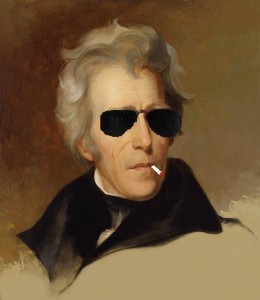 Perhaps the biggest Epic Fail in the entire war occurred at Fort Mims, where 275 men, women, and children were massacred in the middle of the night, all because someone forgot to lock the gate. This led to retaliation at the Battle of Horseshoe Bend where General Andrew Jackson (another future President) commanding several state militias began his campaign against the Creek-Indians. It took Jackson approximately five hours to effectively end the conflict with a body count of 500.
Perhaps the biggest Epic Fail in the entire war occurred at Fort Mims, where 275 men, women, and children were massacred in the middle of the night, all because someone forgot to lock the gate. This led to retaliation at the Battle of Horseshoe Bend where General Andrew Jackson (another future President) commanding several state militias began his campaign against the Creek-Indians. It took Jackson approximately five hours to effectively end the conflict with a body count of 500.
8,000 British troops under the command of Lt. General Edward Pakenham were sent in to deal with Jackson and his rag-tag volunteer army. These were Britain’s finest, the best of the best, veterans of Waterloo, the men who defeated Napoleon Bonaparte. Andrew Jackson bared his fangs, and ripped them a new one. The battle became a decisive victory for the United States, and Jackson became a national hero. Unfortunately no one got the memo that the war had ended a month earlier.
THE END?
At the close of the conflict, as the Treaty of Ghent was being negotiated, both sides still fought campaigns against one another in utter futility, seeing as when all was said and done, nothing changed. No one gained any bit of land one way or another. There’s a few lessons to learn from this war, namely: don’t supply people with weapons in hopes that they’ll take out your enemies for you… oh wait. (Afghanistan anyone?)
However, a few things did come of this war: the myth and legend of Uncle Sam was born (because America’s government was not meant to be an overbearing parental figure), we gained 5 more states, Francis Scott Key wrote the National Anthem after the battle of Baltimore when Fort McHenry was bombarded by the British throughout the night, and the United States of America became a world power.
The War of 1812 proved that ‘Don’t Tread On Me’, actually meant ‘Don’t mess with us or else!’
Erik Slader
————Sources:
“The War of 1812: A Forgotten Conflict” by: Donald R. Hickey
“1812: The Navy’s War” by George Daughan
http://www.history.com/topics/war-of-1812
http://amhistory.si.edu/starspangledbanner/the-war-of-1812.aspx
http://www.archives.gov/exhibits/charters/declaration_transcript.html
http://americanhistory.about.com/od/revolutionarywar/tp/foundingfathers.htm
http://www.history.com/topics/boston-tea-party
http://www.shmoop.com/american-revolution/king-george-iii.html
http://www.powhatan.org/pocc.html

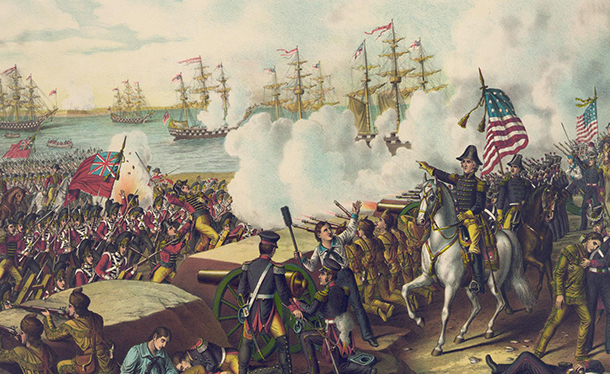
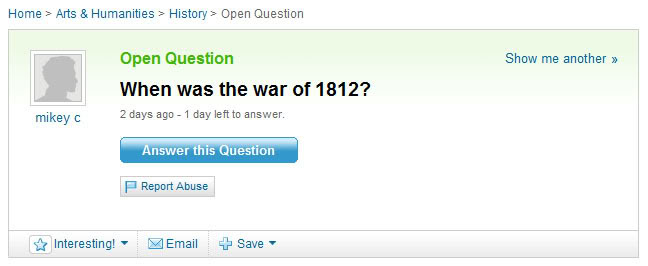







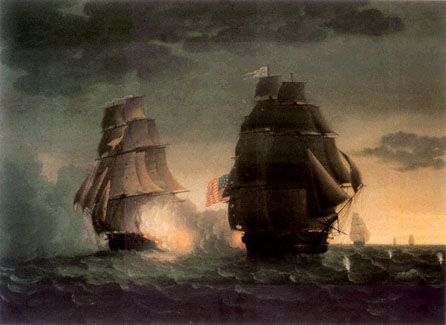



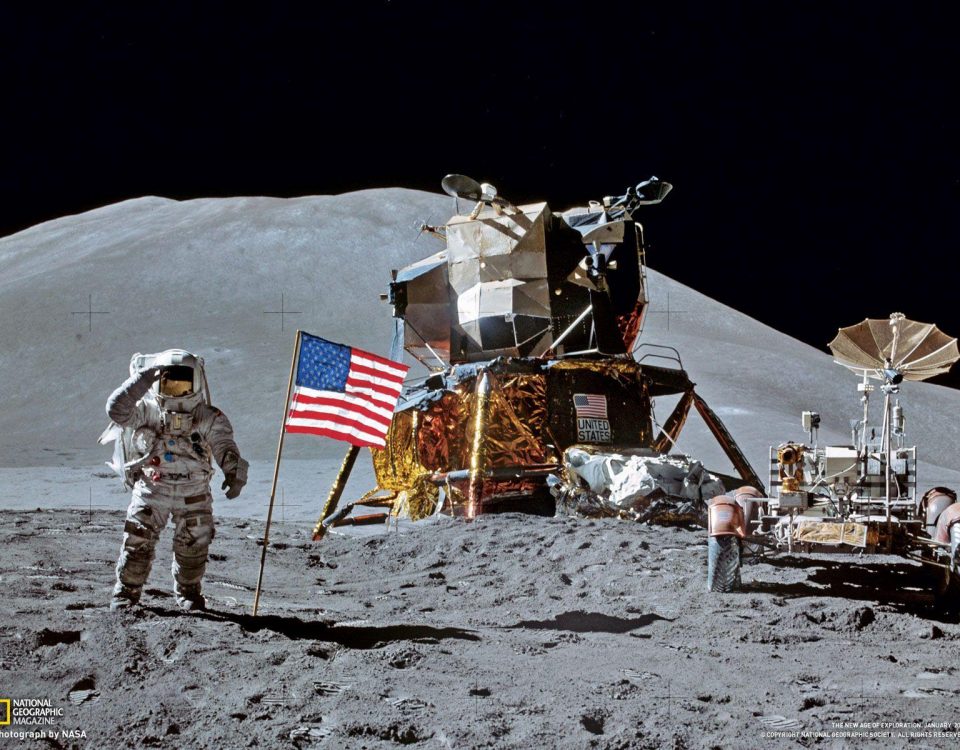

20 Comments
[…] The-War-of-1812? […]
[…] ——Click Here For: The War of 1812! […]
[…] Santa Anna’s enforcer, General Martin Perfecto de Cos, announced that President Anna fully intended to deal with civil disobedience… personally. General Cos and 1400 men established a base at San Antonio de Bexar across the river from the Alamo. The Texas settlers began forming an army at the nearby town of Gonzales, some of the volunteers were American veterans from the War of 1812. […]
[…] ——————Click for The War of 1812! […]
Pretty good, I like it. I’d lay a bit more stress on Gen Scott, and the regulars learning to stand up to the British at Lundy’s Lane and it’s implications on the army, and perhaps how it helped Canada become a nation but still. Very well done.
Thanks man! 🙂
🙂
Interesting and entertaining take on this period of history.
Thank you so much! That means a lot to me. I’m so glad you enjoyed it. I’ll def be checking out your blog as well. You might be interested in my Alamo article too 😉
Reblogged this on EPiK FAILs!!.
[…] The War of 1812 […]
[…] Richard the Lionheart, Columbus, and Andrew Jackson, Napoleon Dynamite Bonaparte is more legend than man, and as a result of his iconic status in […]
[…] The War of 1812 […]
[…] Ultimately the petty squabble that became the War for Jenkins’ Ear devolved into a European-wide conflict known as the War for the Austrian Succession in 1742 when Spain and England both took opposing sides of the conflict, which directly led to the Seven Years War (1756-1763) and its North American spin-off: the French/Indian War. The aftermath of the French and Indian War caused Great Britain to raise taxes on the Yankee Colonists… and we all know how that went down. The rest is American history… (click here for The War of 1812) […]
[…] of lawmakers, eventually giving rise to the Declaration of Independence in 1776 at the onset of the American Revolution. It paved the way for the French Revolution and inspired generations to […]
[…] THE WAR OF 1812 […]
[…] THE WAR OF 1812 […]
[…] THE WAR OF 1812 […]
[…] revolved around The Church. The Church WAS the government, and maintained absolute authority until the American Revolution a century later, when the Founding Fathers decided to found a country based on the separation of […]
[…] first blog was soon followed by The 30 Years War, then the War of 1812, and a bunch of other random topics that I was either researching for various history and humanities […]